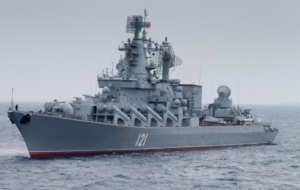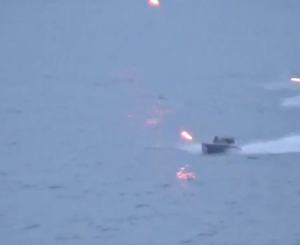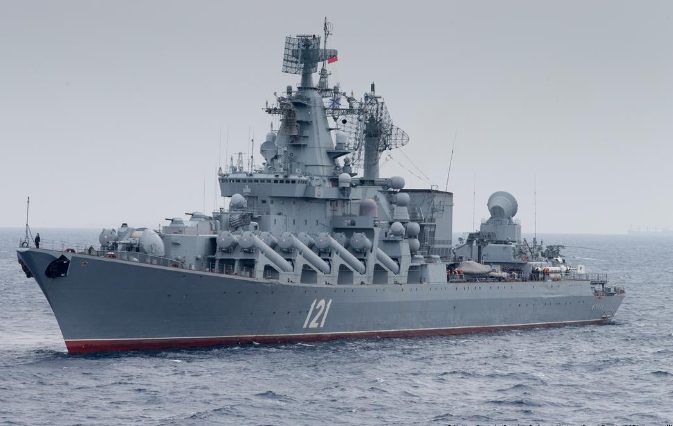Introduction
Sergey Kotov Russian warship, a sailor from the Russian Black Sea Fleet, successfully defended against an attempted attack by two unmanned boats from the Ukrainian armed forces. The incident highlights the escalating tensions between Russia and Ukraine in the Black Sea region.
Details of the attack

The attack took place while Sergey Kotov Warship and its crew were carrying out maritime traffic control duties in the southwest Black Sea area, approximately 370 km from the city of Sevastopol in Crimea. The crew detected the approaching unmanned suicide boats and promptly engaged in defensive action.
The sailors on Sergey Kotov utilized their standard onboard weapons to intercept and eliminate the threat. They managed to neutralize the unmanned boats from a distance of 800-1,000 meters, effectively preventing any damage or casualties.
Despite the attack, Sergey Kotov continued its mission without interruption, showcasing the vessel’s resilience and the professionalism of its crew.
Previous incidents and retaliation
This incident occurred just over a week after the Crimean Bridge was targeted and sustained damage from a series of explosions. Ukrainian officials claimed responsibility for the attack, alleging that unmanned suicide boats were employed by their security agency (SBU) and navy.
In response to previous attacks and threats, the Russian military has carried out retaliatory measures targeting the port city of Odessa in Ukraine. The objective is to dismantle facilities responsible for terrorist activities involving unmanned boats, as well as those engaged in their production.
Instances involving Russian naval vessels, such as the Priazovye and Ivan Khurs, have been specifically targeted by unmanned boat attacks. Fortunately, these vessels were targeted and exploded before reaching their targets, preventing any potential damage or harm.
Description of Sergey Kotov warship
Sergey Kotov is a cutting-edge warship belonging to the Russian Navy’s large patrol ship project, known as the 22160 project. This patrol ship class provides specialized capabilities in carrying out surveillance, patrol, and protection duties in maritime areas.
The vessel boasts impressive specifications, including a displacement of 1,300-1,700 tons, a length of 94 meters, and a maximum speed of 56 km/h. These features enable it to cover a range of approximately 9,500 km, making it a crucial asset for maritime operations.
Equipped with advanced weaponry, Sergey Kotov is armed with an AK-176MA 76.2mm dual-purpose automatic cannon, two 14.5mm guns, and a dual-barreled DP-64 anti-sabotage grenade launcher. These weapons systems provide it with the capability to respond effectively to various threats with precision and accuracy.
Additionally, Sergey Kotov has the potential to be equipped with a range of advanced missile systems, including the Tor-M2KM air defense missiles, Kalibr cruise missiles, the 3M47 Gibka air defense system, and the Paket 324mm torpedoes. These integrated systems enhance the ship’s defensive and offensive capabilities.

Conclusion
The recent incident involving Sergey Kotov and the attempted attack by Ukrainian unmanned boats underscores the increasing tensions between Russia and Ukraine in the Black Sea region. The successful defense by the Russian Navy signifies their commitment to safeguard their interests and maintain regional stability.
This episode serves as a reminder of the ongoing conflicts and challenges in the region, with both parties resorting to unmanned boat attacks as a means of aggression. Despite the successful defense of Sergey Kotov, tensions remain high, and the situation requires sustained diplomatic efforts to prevent further escalation of hostilities.


